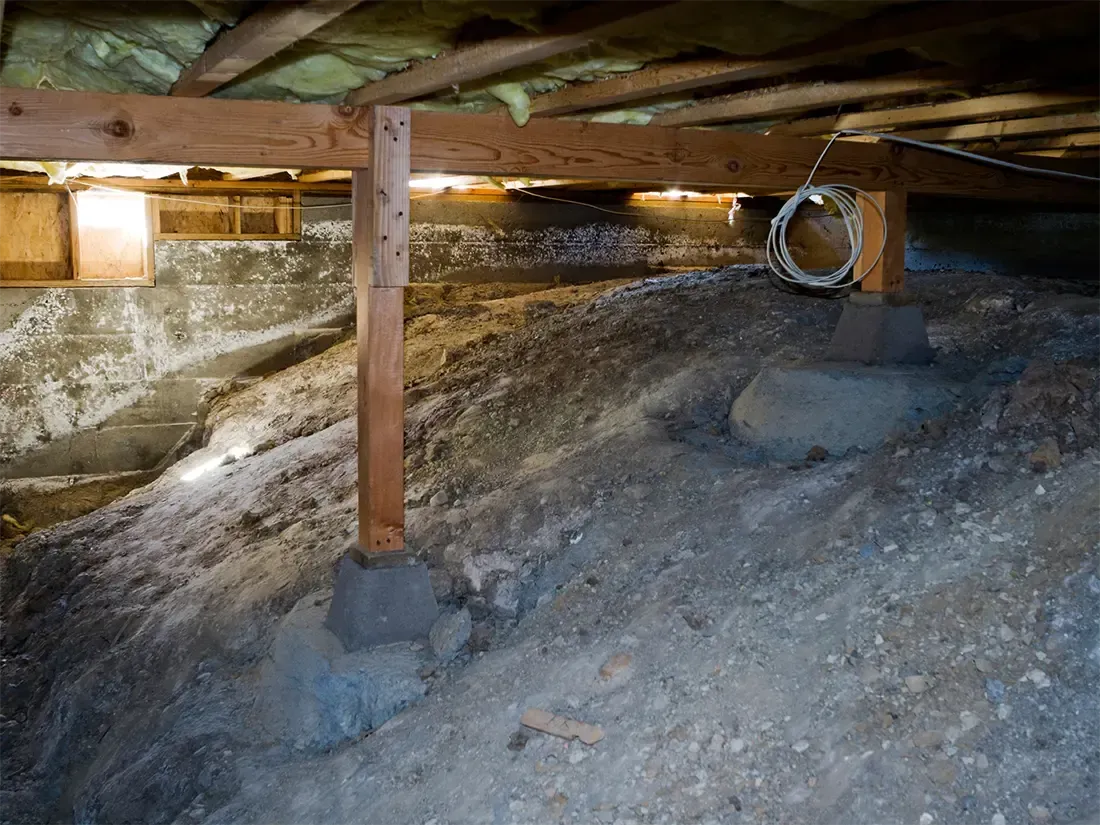The Hidden Dangers of Crawl Space Mold in Myrtle Beach and Why You Need Proper Remediation

Why Are There So Many Crawl Spaces in Myrtle Beach?
Myrtle Beach is known for its beautiful coastal environment, but it also brings homeowners unique challenges. One of the most notable features of homes in this area is the prevalence of crawl spaces. These spaces are ubiquitous due to the high water table in coastal regions. Building homes with crawl spaces instead of basements helps prevent potential flooding and moisture issues by elevating the living areas above ground level. This design choice, while practical, introduces its own set of problems, particularly when it comes to mold and moisture management.
When mold becomes visible in a home, the instinct is often to find a quick and cost-effective solution. Mold stain blockers fit this bill perfectly. These products are designed to cover up mold stains on surfaces, creating a barrier that prevents mold spores from spreading. However, it's important to note that mold is not always visible. Signs of crawl space mold can include a musty odor, increased humidity in the home, or unexplained health issues. If you notice any of these signs, addressing the issue promptly is crucial.
However, this impression is dangerously misleading. While mold stain blockers can make surfaces look clean and mold-free, they do not address the underlying cause of mold growth: moisture. By masking the problem rather than eliminating it, these products allow mold to continue thriving out of sight. This can lead to more severe infestations and serious health risks over time, making the initial "quick fix" an ultimately harmful approach.
The Real Impact of Crawl Space Mold: Health and Structural Risks
The consequences of ignoring crawl space mold are far-reaching and severe. Mold in crawl spaces can lead to various health and structural issues:
· Health Risks: Mold spores can infiltrate your home's air, causing respiratory issues, allergic reactions, and other health problems. For instance, mold exposure has been linked to coughing, sneezing, eye irritation, and asthma attacks. It's important to note that these are temporary discomforts and can lead to long-term health issues if not addressed.
· Structural Damage: Mold can weaken the wooden structures within your crawl space, compromising the integrity of your home's foundation. This damage can lead to repairs and safety hazards.
· Pest Attraction: Damp and moldy environments attract pests like termites, further damaging your home's structural components.
· Unpleasant Odors: Mold growth produces musty odors that can permeate your living spaces, making your home uncomfortable.
The Necessity of Proper Crawl Space Mold Remediation
Proper crawlspace mold remediation is crucial, given the significant health and structural risks. Ignoring crawl space issues because they are out of sight can lead to substantial problems. Effective remediation involves more than just addressing surface-level symptoms; it requires a comprehensive approach to eliminate moisture and mold at its source. Proper remediation includes:
· Identifying and Eliminating Moisture Sources: Improving drainage, fixing leaks, and ensuring adequate ventilation are critical steps.
· Mold Removal and Treatment: When it comes to mold, it's crucial to leave the job to the professionals. Professional mold remediation services are a luxury and an essential step to removing and treating mold and preventing its recurrence. This ensures that the remediation process is effective and gives homeowners the confidence that their homes are mold-free and safe.
· Encapsulation: Sealing off the crawl space with a vapor barrier can help prevent future moisture entry and mold growth.
· Ongoing Maintenance: Regular inspections and maintenance help catch and address issues before they become severe.
Don't Wait Another Day, Act Today!
While the benefits of crawl space mold remediation may not be immediately visible, they are a crucial investment in your home's health and structural integrity. By investing in proper remediation today, you are not only preventing costly repairs and health issues in the future but also ensuring a safe and healthy living environment for your family. Understanding the importance of crawlspace mold remediation helps you protect your home and your family's well-being. Don't let hidden dangers compromise your home; take proactive steps today for a safer tomorrow.



